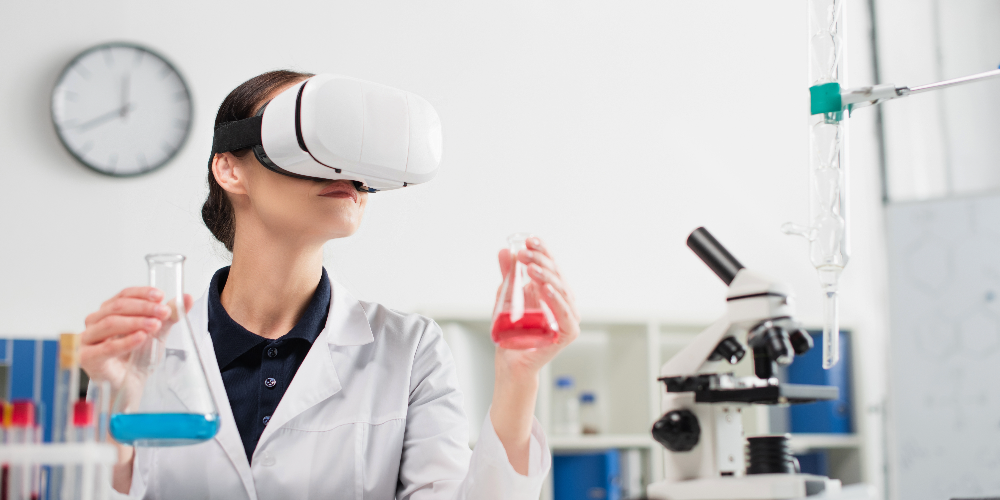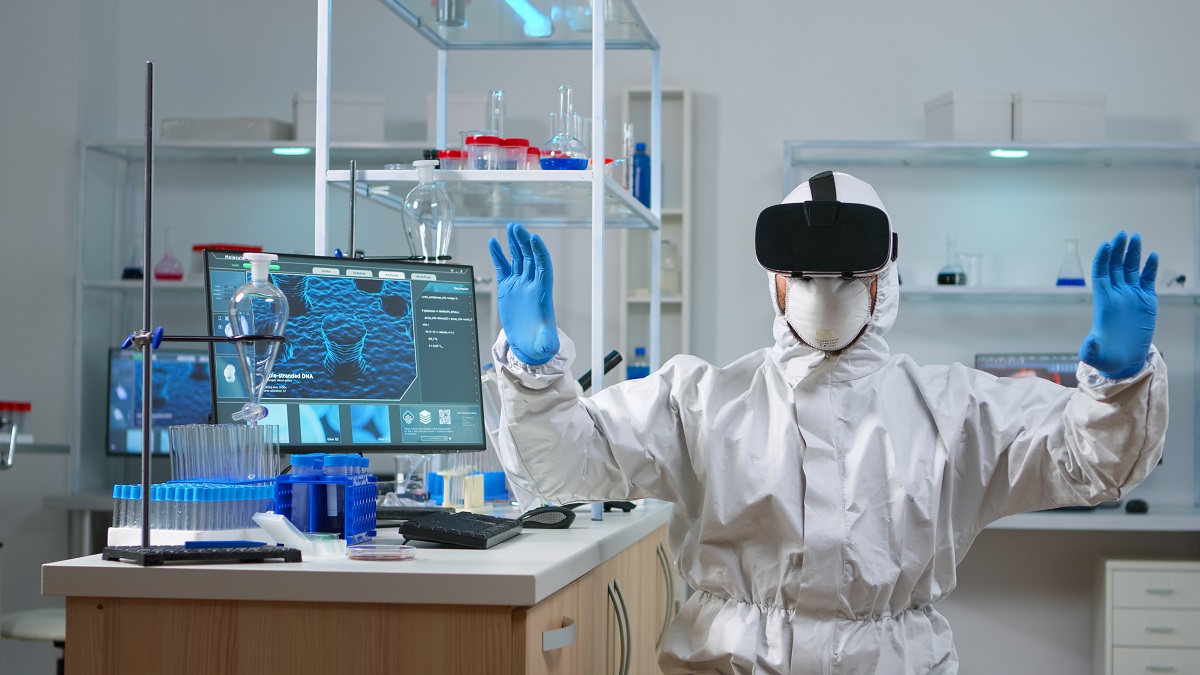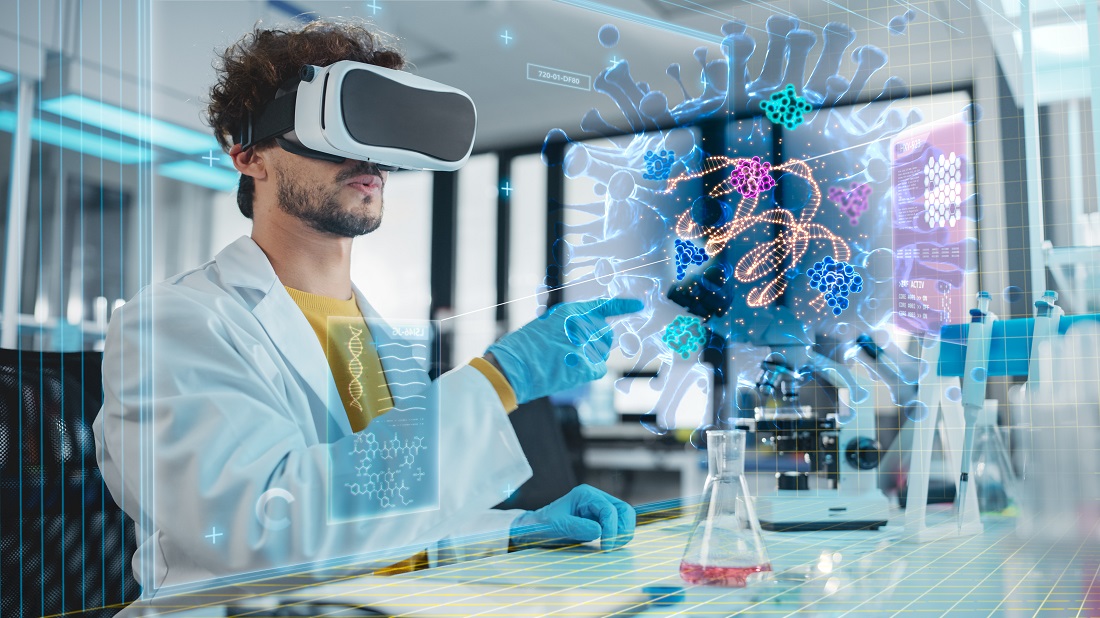5 Key Benefits of VR Titration Simulations for Chemistry Classrooms

A recent research study found that the level of empathy among college students these days is 40% lower than it used to be in the 1980s and 1990s.
The mean empathy score, 3.28 ± 0.47 for college students, is statistically lower than other studies, which reported mean scores around 3.35 ± 0.37.
Before we delve further, ask yourself the following questions-
• Are these statistics important to educators?
• Can you, as an educator, do anything about this?
• Should the teaching methods be modified to induce emotions in the learner?
• What are the repercussions?
This blog will answer all these questions and discuss a few other things.
Let’s get started.
Firstly, what do the Above Statistics Signify?
A decline in empathy among college students negatively affects their academic and social encounters.
Lower empathy may lead to lower involvement with course material, lower academic performance, and lower engagement overall with studies.
All these numbers indicate higher empathy is a good thing for performance.
In addition, students who are viewed with a lack of empathy feel isolated which can make it difficult for them to cultivate supportive networks during a time when they have not developed their buddy networks and are dependent on professors to create these for them.
These individuals may have a diminished capacity for empathy as they enter the workplace and this reduced capacity could negatively impact teamwork, communication, and productivity in the workplace.
This decline needs to be addressed to help not only personal growth but professional growth as well.
Is This Applicable To The Discipline of Chemical Engineering As Well?
 Regarding chemical engineering education, a weakening of empathy among college students has two important implications: the first is towards academic achievement, and the second is to social dynamics.
Regarding chemical engineering education, a weakening of empathy among college students has two important implications: the first is towards academic achievement, and the second is to social dynamics.
Here are three key ways this decline impacts the field-
➡ Reduced collaboration and teamwork
Collaborative projects and teamwork are part of chemical engineering. When empathy is at a low, students will struggle to work together as a team, as empathy is exactly what is needed to navigate diverse viewpoints and cultivate relationships with one another.
When students don’t collaborate, there are negative outcomes to their projects and learning: they might end up struggling to communicate or support each other during problem-solving sessions.
➡ Impaired communication skills
Communication is effective in chemical engineering, especially when we can adequately communicate complex concepts or work with interdisciplinary teams.
Lower empathy levels make it difficult to deliver ideas clearly and understand other’s opinions; misunderstandings and conflicts are likely to follow.
This can impair students' ability to contribute to constructive discussions and positively to their learning environment.
➡ A decreased engagement with course material
Empathy encourages students to engage with course content personally by relating to it and to engage with the broader implications of the material as well.
Less empathy can also make students less interested in studying because they’re less able to feel empathetic to the subject.
Disengagement of such can lead to deterioration in learning in the sense that students may not fully put themselves in their education or understand the societal significance of their discipline
Recently, a survey was conducted in the United Kingdom involving 900 teachers and students. There were 10 participating schools across six countries.
There was an empathy training program for five to ten weeks. Along with the rise in empathy level from 5.55 to 7, the behavioral score of the students rose from 6.52 to 7.89.
This correlation shows the effect empathetic connections to studies have on the overall behaviour of the pupils.
What Are Some Possible Solutions For This?
The enhancement of empathy in chemical engineering education may be adopted by teachers through qualities of experiential learning in service projects that strengthen ties between students and community needs, teamwork that promotes a setting of peer feedback and reflection, and role-playing tasks that enable students to explore views from more than one point of view.
When it comes to technologies, educators can resort to VR methodologies and conversational agents.
In this blog, we will explore all the reasons why VR in organic chemistry is the most viable solution.
Benefits of VR-based Titration in Chemistry Labs
 We cherry-picked one of the most quantitative concepts in chemistry that involves advanced calculations and deep comprehension of the concepts- titration.
We cherry-picked one of the most quantitative concepts in chemistry that involves advanced calculations and deep comprehension of the concepts- titration.
Let us look at how VR transforms science education when it comes to the process of titration in Chemistry labs-
➡ Safety
We can bring this practice to students without exposing them to the dangers of chemical exposure, spills, and accidents. It’s especially useful for beginners learning to do things the right way.
A VR platform was used at the University of Bristol (UK) to enable over 500 students to safely practice titrations without safety incidents.
➡ Cost-effectiveness
VR in science does away with the expensive chemicals, glassware, and equipment that need constant replacement. There is unlimited practice with no ongoing material expenses.
 Get the App from Meta Store: Download Now
Get the App from Meta Store: Download Now
➡ Instant feedback and visualization:
Physical titrations are difficult to visualize in real-time, but VR can show real-time color changes, pH values, and endpoint detection more clearly. Students also get to see molecular-level animations of what is happening during the reaction.
According to research involving 89% of 50 reviewed studies, it was found that virtual reality labs enhance student achievement compared to traditional hands-on experiments.
➡ Repeatability and practice:
Students can do multiple trials quickly, to get better and not worry about wasting materials along the way. They can also pause, rewind, and review their process and see where they went wrong.
➡ Accessibility:
Immersive technology in college education provides students an opportunity to practice lab techniques, regardless of their location, making chemistry education available to distance learning or schools with limited lab facilities.
This is one of the key pillars of Education 4.0, which stresses on democratising learning opportunities for everyone, irrespective of geographical location.
It also fosters inclusivity, ensuring that all students, including those in remote or under-resourced areas, get proper access to the education material.
Summing up the key points in the blog -
• A 40% reduction in empathy among college students since the 1980s impacts academic and social engagement, leading to lower performance, isolation, and challenges in teamwork and communication.
• Lower empathy affects teamwork, communication, and engagement with course material, which are crucial in collaborative, interdisciplinary fields like chemical engineering.
• Educators can enhance empathy through experiential projects, teamwork exercises, and VR-based role-playing, fostering personal connections with course material.
• Virtual reality in the classroom improves safety, reduce costs, provide instant feedback, allow repeatability, and increase accessibility, making lab skills attainable even remotely.
➡ Final words
The reduced empathy among college students is said to not only reduce their academic performance but also their social and future professional relationships.
Indeed, as we’ve seen, this diminution of empathy is particularly harmful to fields such as chemical engineering, where collaboration, communication, and engagement with course material are essential.
With the combination of new teaching methods (e.g. experiential learning, VR technology) educators can create an empathetic environment in which students can train both professionally and personally.
.png)
.png)



